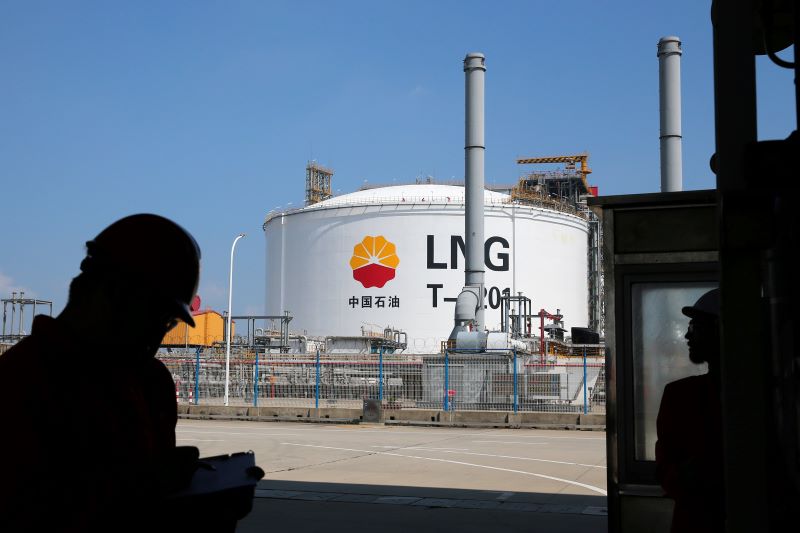Fossil fuel companies that built gas power plants more than a decade ago are hoping for rewards from a new carbon credit market
Fossil fuel companies are aiming to profit from a new United Nations’ carbon market by selling carbon credits linked to gas-fired power plants they have already built.
At the Cop28 climate summit last December, governments agreed to set up a new global carbon credit market under Article 6.4 of the Paris Agreement – and a host of fossil fuel firms and their middlemen are now trying to cash in by making their projects eligible for trading.
Developers applied for thousands of projects to be transferred over from the old discredited Clean Development Mechanism (CDM) to the new market that will be established, before the deadline of January 1 this year.
Most of these projects are for renewable energy – which, while good for the climate, have stirred debate. Critics argue that they do not need additional funding from selling carbon credits because they are profitable without it.
However, more controversial are ten projects Climate Home News has identified, based largely in Asia, which backed the construction of power plants that run on natural gas, one of the fossil fuels governments agreed to transition away from at Cop28.
If approved by their host nations, the projects would transfer more than 10 million old gas-linked credits – equivalent to the reduction of 10 million tonnes of carbon dioxide (CO2) emissions a year – to the new Paris carbon market.
“These projects are entirely inappropriate,” said Carbon Market Watch researcher Jonathan Crook. “Some were registered as far back as 2009. It’s unreasonable to assume they expected to rely on revenue from a new market mechanism in 2024 – not to mention that these projects may lock in fossil fuel emissions and infrastructure for years to come, among other issues.”
Clean, cheap or fair – which countries should pump the last oil and gas?
The Integrity Council for the Voluntary Carbon Market was set up in 2021 in a bid to ensure that carbon credits deliver on the emissions reductions they have promised and have a positive impact for the climate. In its categorisation of different types of carbon credit, offsets issued for gas-fired power plants are given the worst ranking.
Similarly, BeZero, a ratings agency for carbon credit projects, looked at three of the CDM gas projects that have applied for transfer to the new market. It gave them a ‘C’ grade, meaning they “provide a very low likelihood” of reducing emissions by as much as they claim.
It cited the “minimal impact” of carbon credit revenues on the project’s overall financial situation and the risk of methane leaks from gas infrastructure that would make the projects more polluting than asserted.
Chinese gas-fired plant
The biggest project is a gas-fired power plant built by China’s state-owned oil and gas company CNOOC and Japanese conglomerate Mitsubishi in 2010 in the province of Fujian, China, just across the sea from Taiwan.
To fire the plant’s four turbines, CNOOC and Mitsubishi imported gas from an Indonesian gas field called Tangguh, which they both had stakes in, through the CNOOC-owned Fujian gas import terminal.
In addition to the income they received from selling the gas, importing it through the terminal and then selling the electricity it produced, they also submitted an application to the CDM to develop and sell carbon credits linked to the plant.
By their own calculations, the plant would emit 2.3 million tonnes of CO2 a year when fully operational. But if they didn’t build it, they said the electricity would come from coal, emitting over 5.3 million tonnes of CO2 a year. So they claimed credits for reducing the amount of CO2 that would have entered the atmosphere by an annual 3 million tonnes.
Justifying this assumption, they said that oil was too expensive and zero-carbon alternatives were not viable as an alternative. Most of Fujian’s hydropower potential had already been tapped, while wind power was “just start-up” and “of seasonal nature”, they added. They did not even mention solar power – now the cheapest electricity source.
However, coal’s main competitors in the province are not gas but nuclear and hydro, power sources that do not emit greenhouse gases. Wind power has also grown rapidly in the province since the gas-fired plant was built.
Lauri Myllyvirta, a senior fellow with the Asia Society Policy Institute, told Climate Home: “The premise that power generation growth would come from coal if a new fossil gas plant wasn’t built was never true and certainly is not true today.”
Mitsubishi withdrew from the carbon credit project in 2022. While CNOOC remains involved, the main project participant is now a company called Europe New Energy Investment Capital, run by a Chinese citizen called Dongquan Yang.
A spokesperson for CNOOC said the project “is out of the scope of CNOOC Limited’s business operations”. Asked how that was compatible with CNOOC Fujian Gas Power Co., Ltd being listed as an authorised participant, the spokesperson did not reply.
Indian carbon-credit d
Read More







Never miss a story. Join us on social.